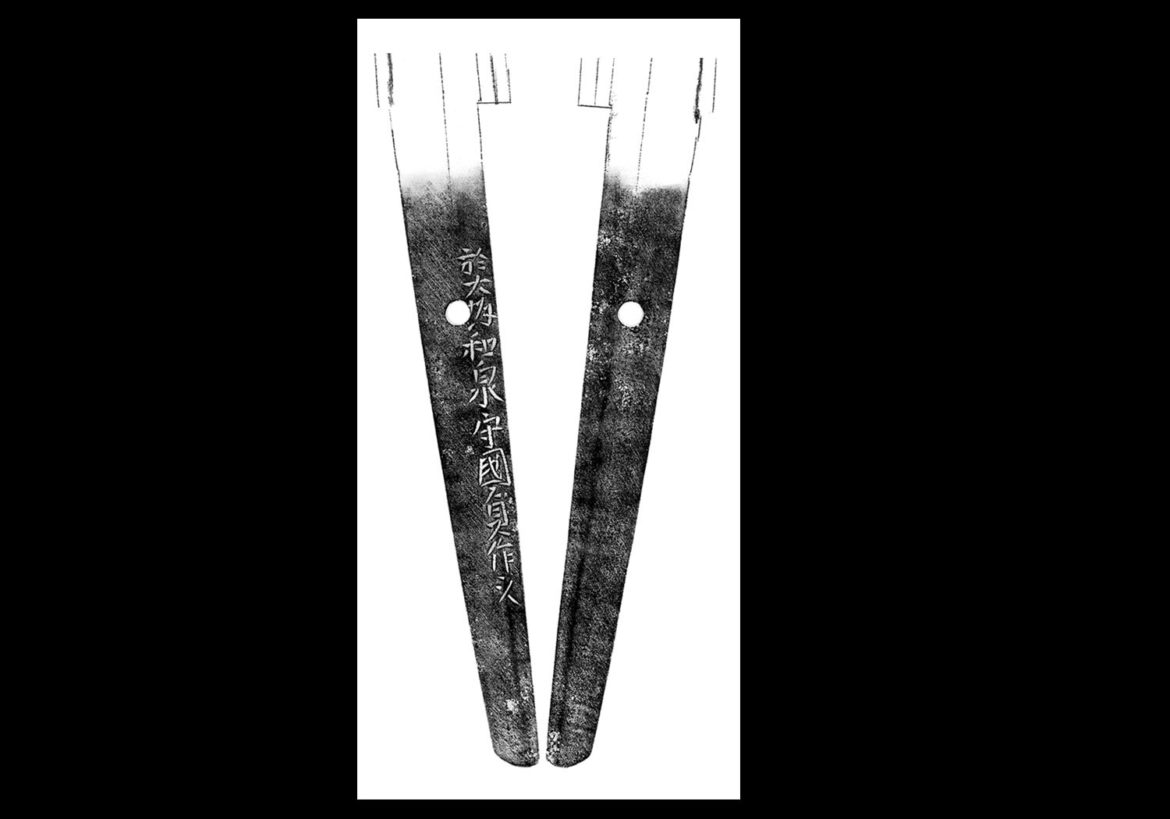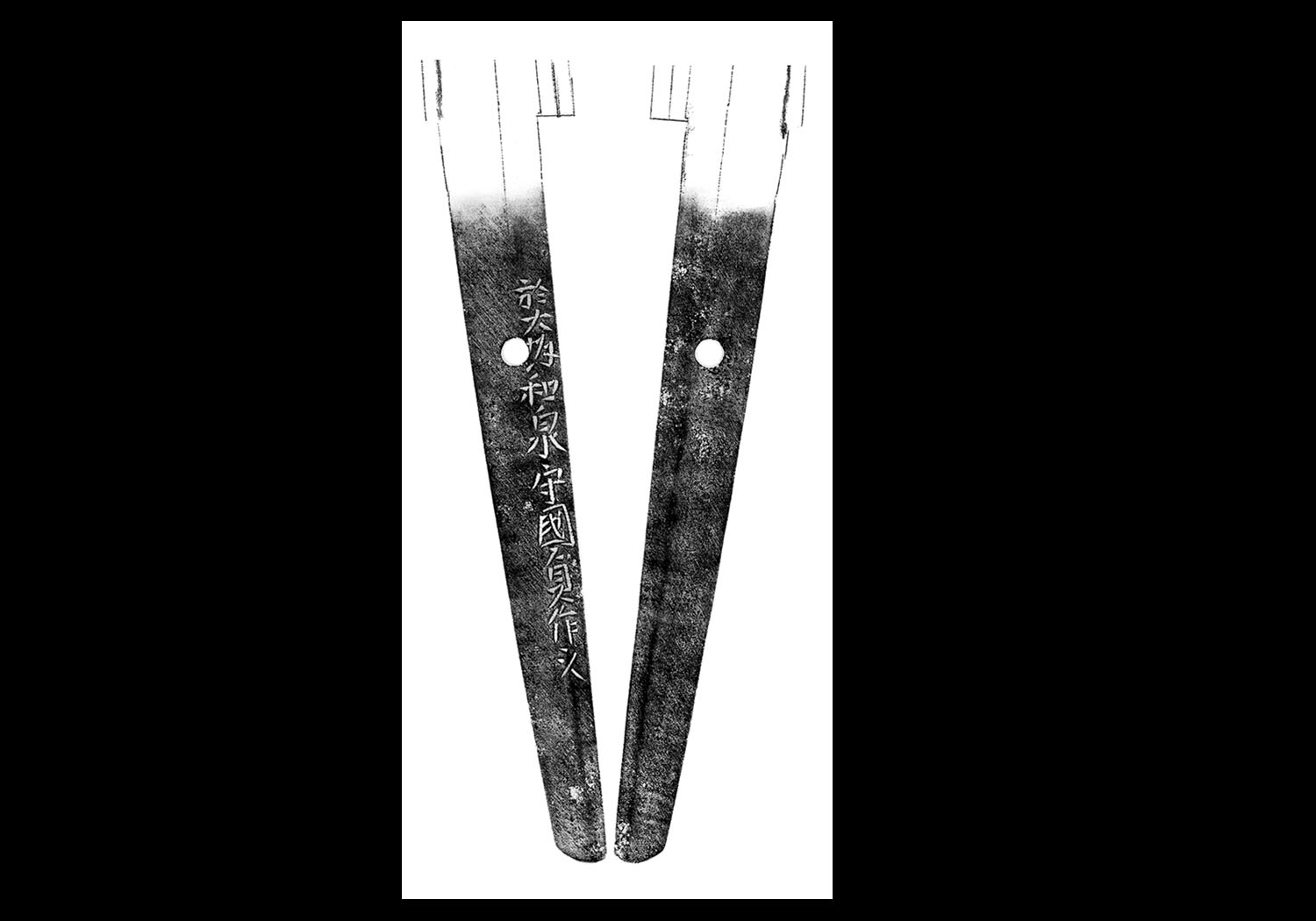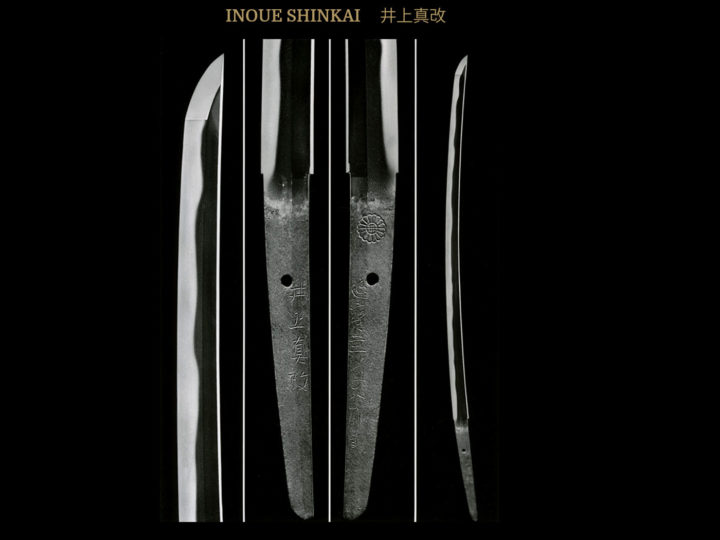
Kunisada (国貞) was born in Tensho 18 (1590) in Hyuga province, present day Miyazaki prefecture. He became a student of the famous Shinto smith, Horikawa Kunihiro (堀川国広). It is commonly believed that since he was only twenty-five years old when Kunihiro died, both he and Kawachi no Kami Kunisuke (河内守国助) came under the tutelage of Echigo no Kami Kunitomo (越後守国儔). His early signature and work style resembles that of Kunitomo (国儔) who was a senior student to him in the Horikawa Kunihiro (堀川国広) school.
It is thought that he moved to Osaka in Genna 7 (1621) and once there he founded the Osaka Shinto School. His early swords show features in common with the Kunihiro school. After he moved to Osaka, Kunisada established his own style, which became known as the Osaka Shinto school. He received the title of Izumi no Kami (和泉守) in Genna 9 (1623) and he passed away in Keian 5 (1652). He is known to have become a monk in his last days and he used the name of Dowa.
Kunisada (国貞) is also famous for being the father of Inoue Shinkai (井上真改). Inoue Shinkai (井上真改) is one of the most famous smiths of the Shinto period and was known as the Masamune of Osaka. When Shinkai (真改) first began signing swords, he signed them Inoue Izumi no Kami Kunisada (井上 和泉守国貞) that was very similar to his father’s signature. For that reason, we call the first generation Kunisada, “Oya Kunisada” meaning the “parent Kunisada”.
SUGATA: His works are mostly katana and wakizashi in shinogi-zukuri. There are also kanmuri–otoshi-zukuri and hira-zukuri wakizashi. Rarely, there are also tanto of standard proportions.
JITETSU: His kitae generally has the appearance of nashiji as his ko-itame hada shows its very tight grain formations. There are some in which the hada is a well-refined ko-mokume like the stripes of chirimen (crepe paper). Occasionally there is one that gives the appearance of very well executed o-itame hada. Often the shinogi ji has a tinge of masame and the ji-nie is often thick and profuse. The burnished surface of the shinogi-ji is dark and looks like the surface of a mirror. This feature is called Osaka tetsu or Osaka gane.
HAMON: His hamon overall consists of deep nioi admirably sprinkled with fine nie grains. There are various types such as suguba, notare, gunome midare, o-midare, and so on When it is midare, there are frequently works in which a hamon of gunome with maru kashira (round heads) are arranged in 3’s, 4’s, 5’s, and 6’s. The tone of his hamon resembles those of Kunitomo. In all of them the nie and nioi are lively. The hamon always starts in suguha yakidashi that becomes notare and almost always shows some tobiyaki in the monouchi area up to where the boshi turns back.
BÔSHI: His bôshi, which in most cases is in ko-maru, is characterized by its slight widening in the middle. It usually ends in a short kaeri, but on occasion it will return in an extremely long kaeri becoming almost mune-yaki.
HORIMONO: There are frequently horimono. In fact, Kunisada is known for the greatest number of examples of works with horimono in the Horikawa School. It is especially frequent in wakizashi and tanto. There is horimono of the Sadamune style engraved on tanto.
NAKAGO: The mune is ko-maru, and as for the saki, the works of his younger years are a shallow kurijiri, but as he aged, they gradually became slender and in a ha-agari kurijiri shape. The yasurime is o-sujikai all the way up to the hamachi.
MEI: His most common mei was the seven character one reading:
IZUMI NO KAMI KUNISADA 泉国貞
Occasionally one finds this mei also:
OITE OSAKA IZUMI NO KAMI FUJIWARA KUNISADA 於大坂泉守藤原国貞
Some of the examples of his mei before he received the “Izumi no Kami” title are as follows:
KUNISADA (very early mei) 国貞
FUJIWARA KUNISADA 藤原国貞
SESSHU OSAKA JU FUJIWARA KUNISADA 摂州大坂住藤原国貞
SESSHU JU FUJIWARA KUNISADA 摂州住藤原国貞
After the second year of Shoho (1645), his mei of IZUMI NO KAMI KUNISADA was chiseled in sosho script (grass writing). This is regarded as his Dowa-mei, that is, Kunisada’s mei after he entered the priesthood.



